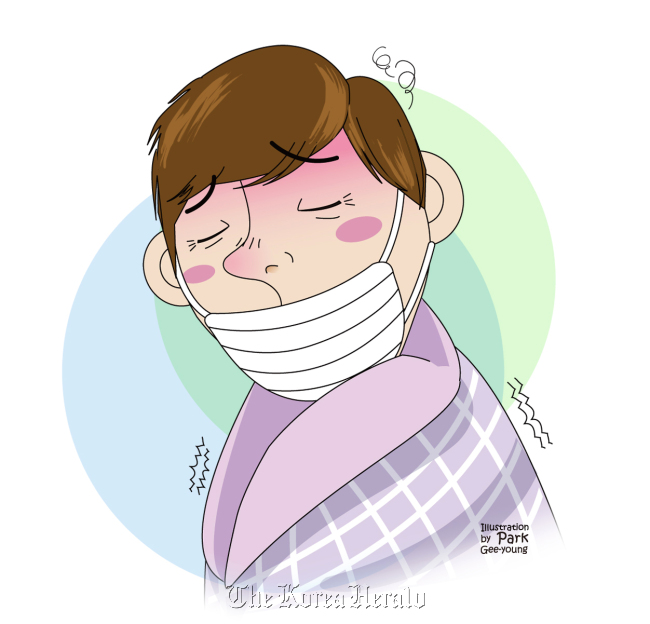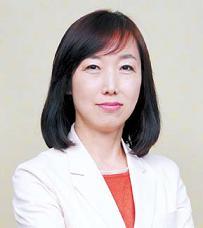In 2009, there was a worldwide pandemic of influenza. The pathogenic virus is still prevalent and is becoming a common cause of influenza.
Influenza caused the deaths of approximately 20 million people worldwide between 1918 and 1919. This was the “Spanish Flu” and the large number of deaths increased the awareness of the disease. Since then, there have been similar pandemics every 10 to 40 years. The pandemic in 2009 followed the “Hong Kong Flu” in 1958 by approximately 40 years.
The influenza viruses are categorized into three serotypes, A, B and C. The major epidemics have been caused by type A, including the most recent pandemic. The influenza B viruses tend to cause smaller regional epidemics, and the type C viruses are quite rare. Influenza viruses are well known for their variation. When they change, our immune system cannot recognize them and work against them. This is why people who have had influenza before can still catch it again. Influenza is common between December and March in the Northern Hemisphere.

Influenza spreads when tiny droplets produced when the patient with influenza sneezes or coughs are inhaled by another person. Less often, a person might get influenza by touching a surface or object that has the influenza virus on it and then touching their own mouth or nose. Because of this, it is rapidly transmitted to people who share the same living space, such as family members and school students. During an epidemic, around 10 to 20 percent of the population can become infected. During a pandemic, up to 40 percent of the population can become infected. Many school children catch influenza and this leads to many hospital admissions. This was also the case in the 2009 pandemic.
Influenza symptoms arise after a latent period of one to four days after infection. The symptoms of influenza include fever, joint pain in the limbs and severe muscle aches. Other symptoms include sore throat and injected conjunctiva and nasal mucosa, and dry and severe cough. The symptoms are similar to those of the common cold, but a different virus causes the common cold and the disease is much less severe. The fever can rise up to 40 degrees Celsius, but this will usually subside after 3 to 5 days along with other systemic symptoms. Generally, other respiratory symptoms such as cough, runny nose, blocked nose, throat pain and a hoarse voice can last for about two weeks even after the systemic symptoms have subsided. In children, gastrointestinal symptoms such as vomiting and abdominal pain can also occur.
Older people aged 65 years and over, and those with chronic diseases such as cardiovascular disease, chronic lung disease and diabetes, and those with suppressed immunity can develop complications of influenza. Common complications of influenza include viral pneumonia, secondary bacterial infection, myositis, myocarditis and central neuritis. Pediatric patients often recover well from influenza without developing further complications. However, children who are taking aspirin can develop a serious complication called Reye’s syndrome, so care must be taken when children are given aspirin.
The recommended treatment is relief of symptoms. This includes rest and taking antipyretics and analgesics to control the symptoms. It is also recommended that you drink large amounts of fluids to prevent dehydration. Flu-fighting antiviral medications are available but as healthy people usually recover with no complications it is not generally recommended. Antivirals are usually used when there are severe symptoms or if the patient is elderly, has a chronic illness or has a suppressed immune system, as these people can develop potentially fatal complications. As resistance to antivirals is a problem, it is important that the circulating viral strain is identified and an appropriate antiviral agent is used.
To prevent influenza, it is important to maintain personal hygiene and wash your hands frequently. Those with respiratory symptoms should display cough etiquette (covering your mouth with your sleeve or with tissue when coughing or sneezing, but not using your hands). Annual influenza vaccines can prevent 70 to 90 percent of influenza so it is currently the best method of prevention.
The following groups of people should receive influenza vaccines: elderly people over the age of 50, those with cardiovascular disease, chronic lung disease, chronic kidney disease, diabetes, liver cirrhosis, malignancies, those taking immunosuppressants, children taking aspirin and pregnant women. These people are at increased risk of developing complications from influenza, which can be potentially fatal. Elderly people and those with chronic diseases should receive both the influenza vaccine and the pneumococcal vaccine.
Those who can pass on influenza to these people, for example, family and medical contacts (high-risk group) should also receive the influenza vaccination.
Healthy adults do not always need influenza vaccines. However, healthy people can also benefit from the influenza vaccines as it can minimize any sick days off work or study. Since the pandemic in 2009, it is now recommended that those aged 6 months or older all receive influenza vaccines. Young children under the age of 6 months do not receive influenza vaccines.
The vaccine is effective after one to two weeks, so you should try to have your vaccination by November. New vaccines are developed each year by predicting the seasonal influenza virus antigens. This is why influenza vaccinations usually start after September. Therefore, the influenza vaccination period is between September and November each year.
There are minimal side effects from the vaccines. However, as the usual vaccines are developed using eggs, those with egg allergies should not be vaccinated. Those who have missed the vaccination period may take antiviral agents as a prophylaxis during the outbreak.
Influenza caused the deaths of approximately 20 million people worldwide between 1918 and 1919. This was the “Spanish Flu” and the large number of deaths increased the awareness of the disease. Since then, there have been similar pandemics every 10 to 40 years. The pandemic in 2009 followed the “Hong Kong Flu” in 1958 by approximately 40 years.
The influenza viruses are categorized into three serotypes, A, B and C. The major epidemics have been caused by type A, including the most recent pandemic. The influenza B viruses tend to cause smaller regional epidemics, and the type C viruses are quite rare. Influenza viruses are well known for their variation. When they change, our immune system cannot recognize them and work against them. This is why people who have had influenza before can still catch it again. Influenza is common between December and March in the Northern Hemisphere.

Influenza spreads when tiny droplets produced when the patient with influenza sneezes or coughs are inhaled by another person. Less often, a person might get influenza by touching a surface or object that has the influenza virus on it and then touching their own mouth or nose. Because of this, it is rapidly transmitted to people who share the same living space, such as family members and school students. During an epidemic, around 10 to 20 percent of the population can become infected. During a pandemic, up to 40 percent of the population can become infected. Many school children catch influenza and this leads to many hospital admissions. This was also the case in the 2009 pandemic.
Influenza symptoms arise after a latent period of one to four days after infection. The symptoms of influenza include fever, joint pain in the limbs and severe muscle aches. Other symptoms include sore throat and injected conjunctiva and nasal mucosa, and dry and severe cough. The symptoms are similar to those of the common cold, but a different virus causes the common cold and the disease is much less severe. The fever can rise up to 40 degrees Celsius, but this will usually subside after 3 to 5 days along with other systemic symptoms. Generally, other respiratory symptoms such as cough, runny nose, blocked nose, throat pain and a hoarse voice can last for about two weeks even after the systemic symptoms have subsided. In children, gastrointestinal symptoms such as vomiting and abdominal pain can also occur.
Older people aged 65 years and over, and those with chronic diseases such as cardiovascular disease, chronic lung disease and diabetes, and those with suppressed immunity can develop complications of influenza. Common complications of influenza include viral pneumonia, secondary bacterial infection, myositis, myocarditis and central neuritis. Pediatric patients often recover well from influenza without developing further complications. However, children who are taking aspirin can develop a serious complication called Reye’s syndrome, so care must be taken when children are given aspirin.
The recommended treatment is relief of symptoms. This includes rest and taking antipyretics and analgesics to control the symptoms. It is also recommended that you drink large amounts of fluids to prevent dehydration. Flu-fighting antiviral medications are available but as healthy people usually recover with no complications it is not generally recommended. Antivirals are usually used when there are severe symptoms or if the patient is elderly, has a chronic illness or has a suppressed immune system, as these people can develop potentially fatal complications. As resistance to antivirals is a problem, it is important that the circulating viral strain is identified and an appropriate antiviral agent is used.
To prevent influenza, it is important to maintain personal hygiene and wash your hands frequently. Those with respiratory symptoms should display cough etiquette (covering your mouth with your sleeve or with tissue when coughing or sneezing, but not using your hands). Annual influenza vaccines can prevent 70 to 90 percent of influenza so it is currently the best method of prevention.
The following groups of people should receive influenza vaccines: elderly people over the age of 50, those with cardiovascular disease, chronic lung disease, chronic kidney disease, diabetes, liver cirrhosis, malignancies, those taking immunosuppressants, children taking aspirin and pregnant women. These people are at increased risk of developing complications from influenza, which can be potentially fatal. Elderly people and those with chronic diseases should receive both the influenza vaccine and the pneumococcal vaccine.
Those who can pass on influenza to these people, for example, family and medical contacts (high-risk group) should also receive the influenza vaccination.
Healthy adults do not always need influenza vaccines. However, healthy people can also benefit from the influenza vaccines as it can minimize any sick days off work or study. Since the pandemic in 2009, it is now recommended that those aged 6 months or older all receive influenza vaccines. Young children under the age of 6 months do not receive influenza vaccines.
The vaccine is effective after one to two weeks, so you should try to have your vaccination by November. New vaccines are developed each year by predicting the seasonal influenza virus antigens. This is why influenza vaccinations usually start after September. Therefore, the influenza vaccination period is between September and November each year.
There are minimal side effects from the vaccines. However, as the usual vaccines are developed using eggs, those with egg allergies should not be vaccinated. Those who have missed the vaccination period may take antiviral agents as a prophylaxis during the outbreak.

By Peck Kyong-ran
The author is a doctor at Division of Infectious Diseases at Samsung Medical Center and is a professor of Sungkyunkwan University School of Medicine. ― Ed.
-
Articles by Korea Herald




![[Music in drama] Rekindle a love that slipped through your fingers](http://res.heraldm.com/phpwas/restmb_idxmake.php?idx=644&simg=/content/image/2024/05/01/20240501050484_0.jpg&u=20240501151646)



![[New faces of Assembly] Architect behind ‘audacious initiative’ believes in denuclearized North Korea](http://res.heraldm.com/phpwas/restmb_idxmake.php?idx=644&simg=/content/image/2024/05/01/20240501050627_0.jpg&u=20240502093000)










![[Today’s K-pop] Stray Kids go gold in US with ‘Maniac’](http://res.heraldm.com/phpwas/restmb_idxmake.php?idx=642&simg=/content/image/2024/05/02/20240502050771_0.jpg&u=)